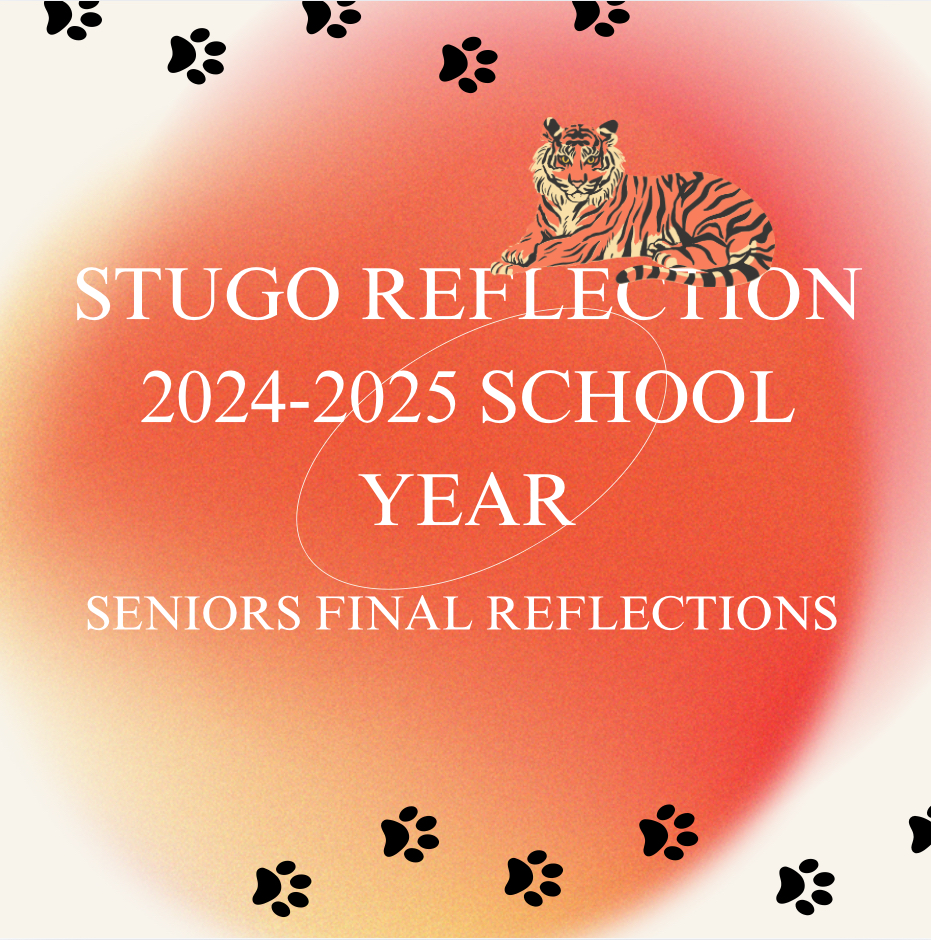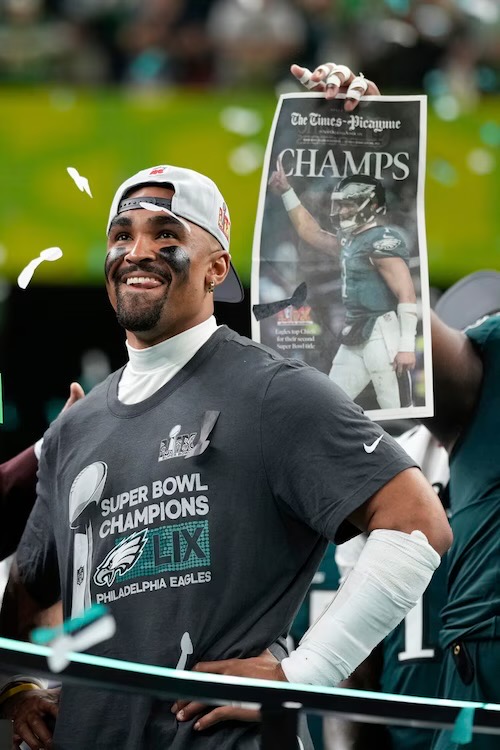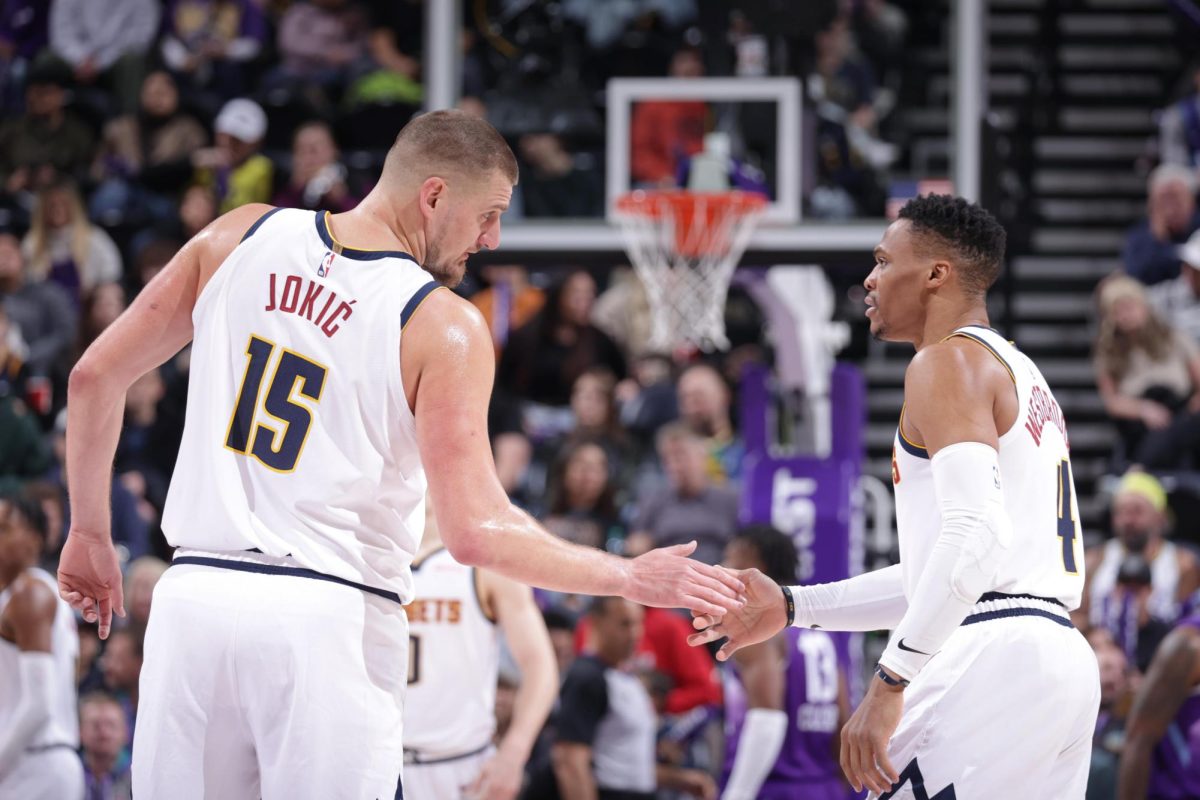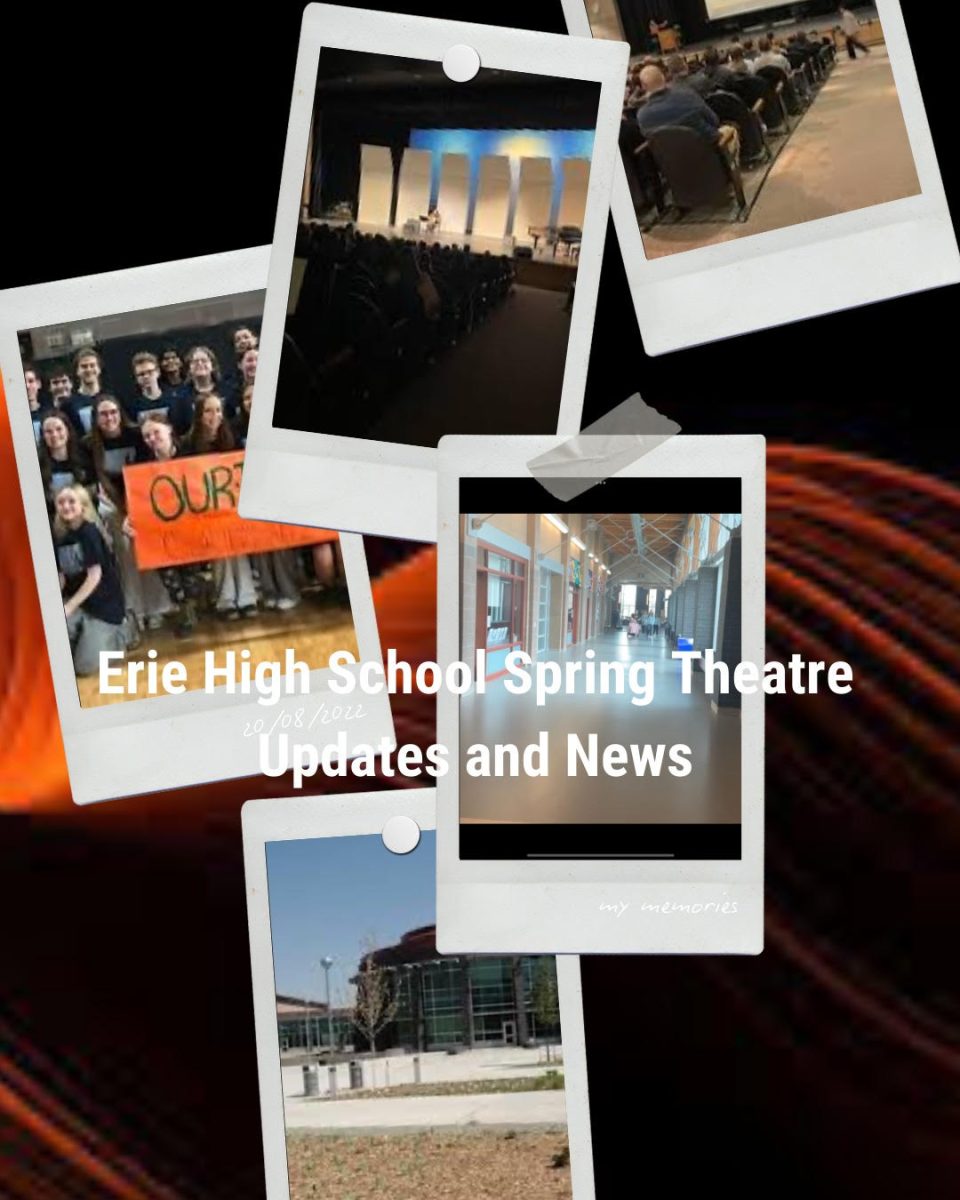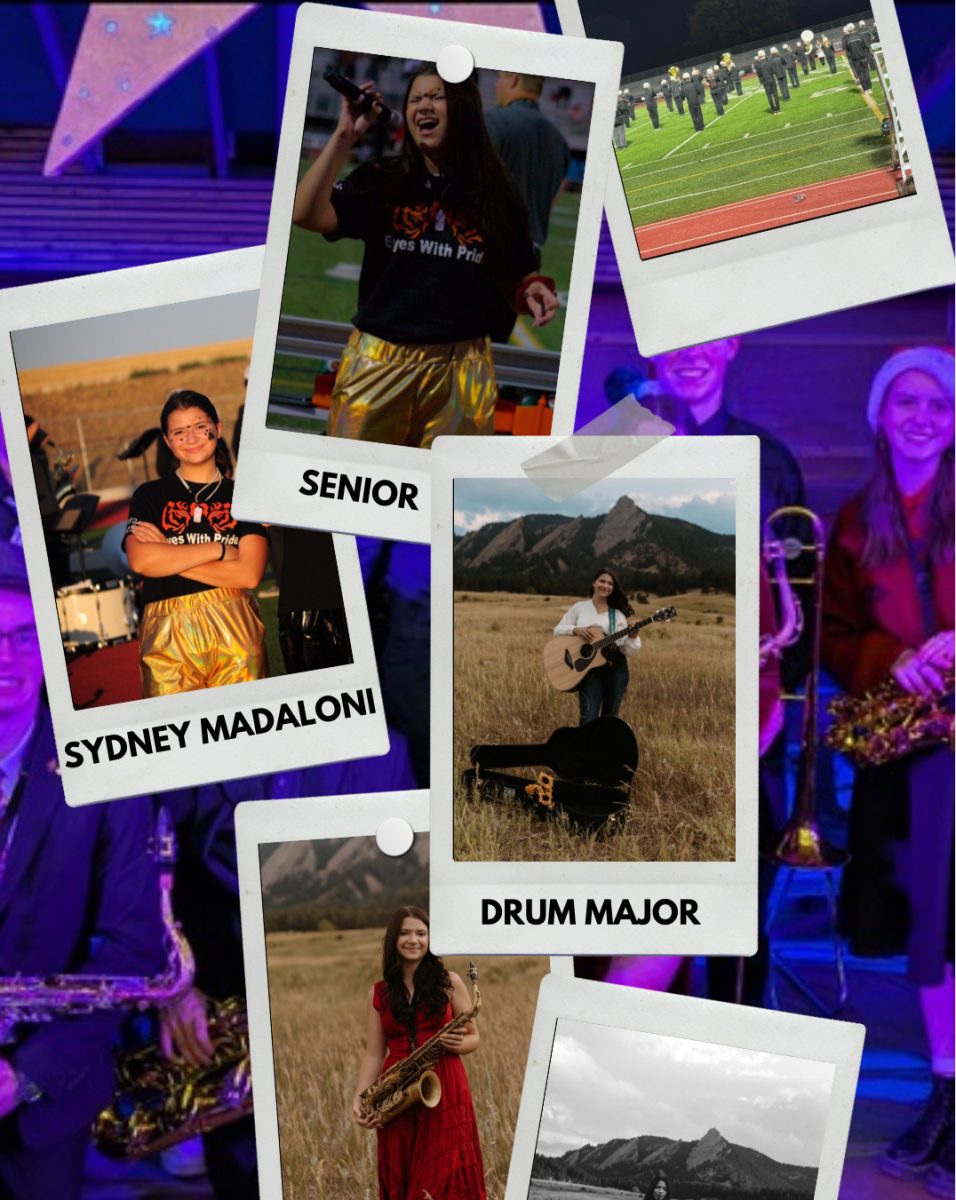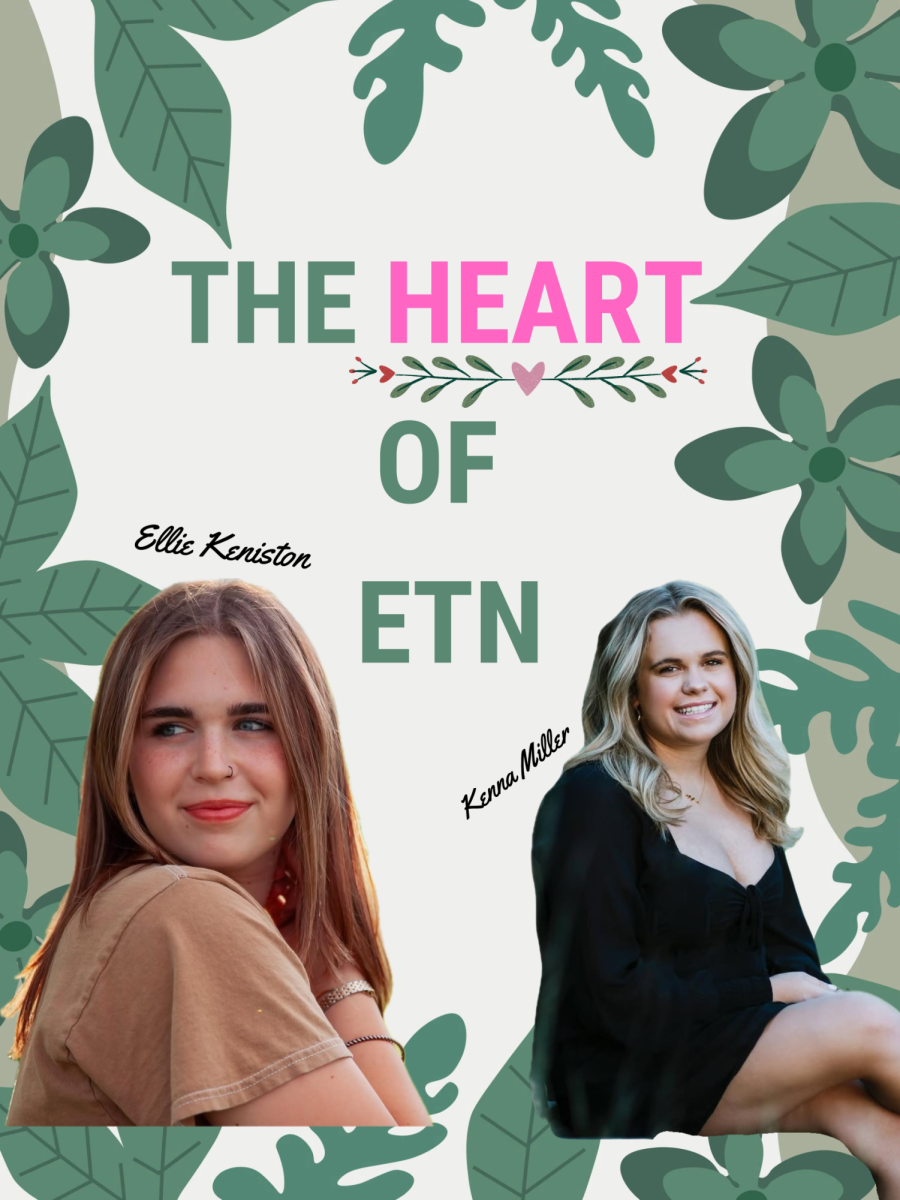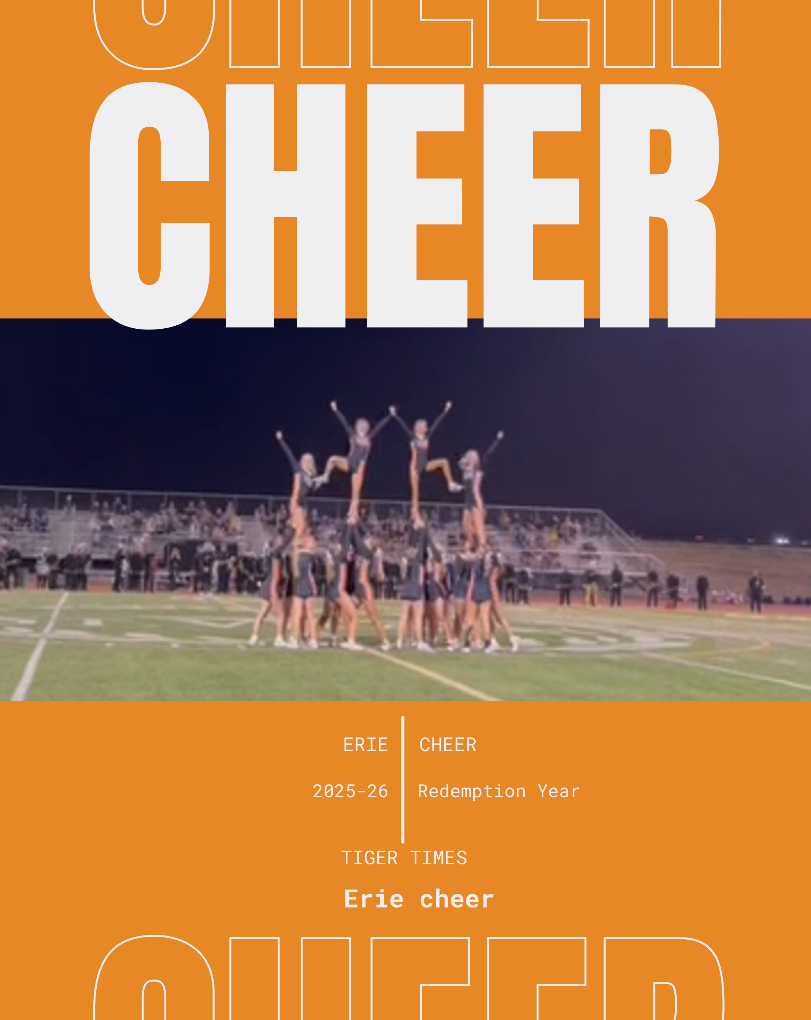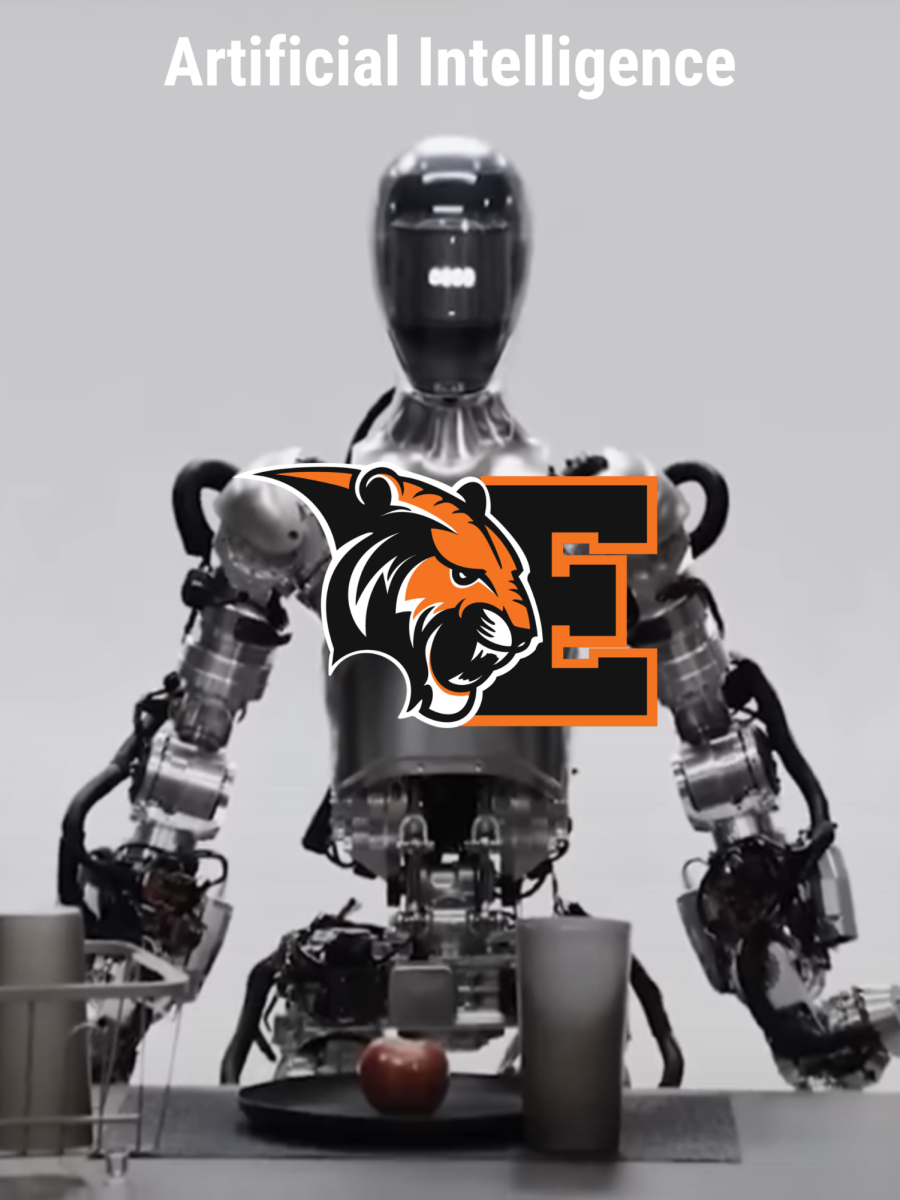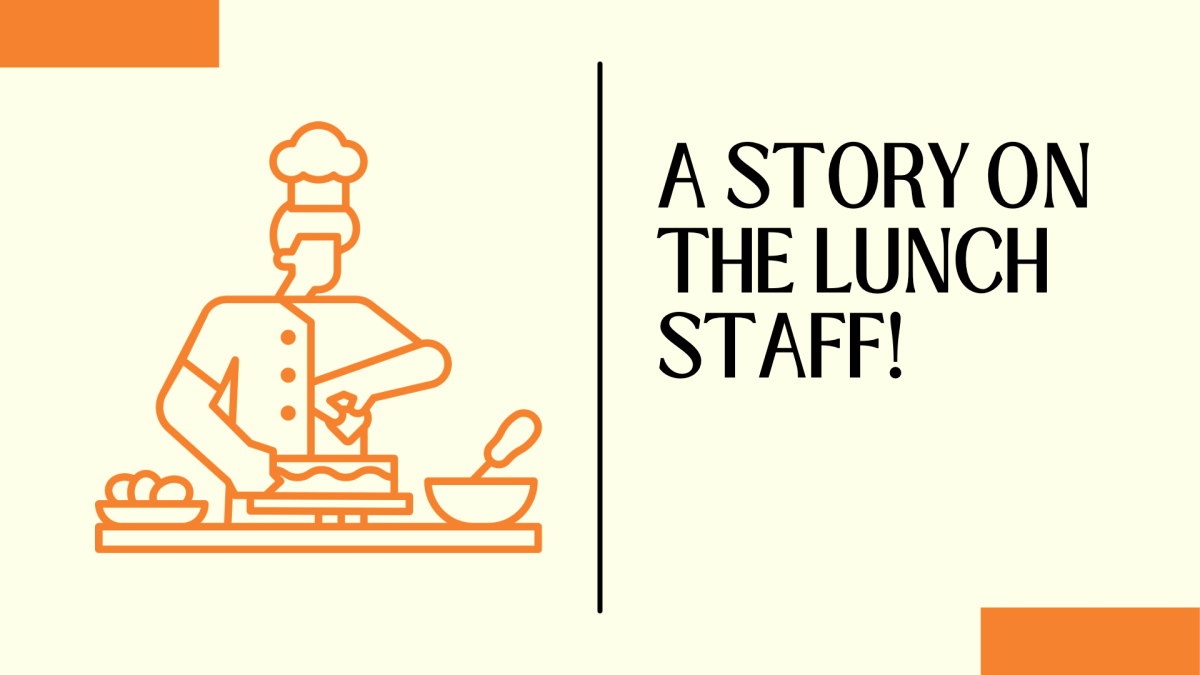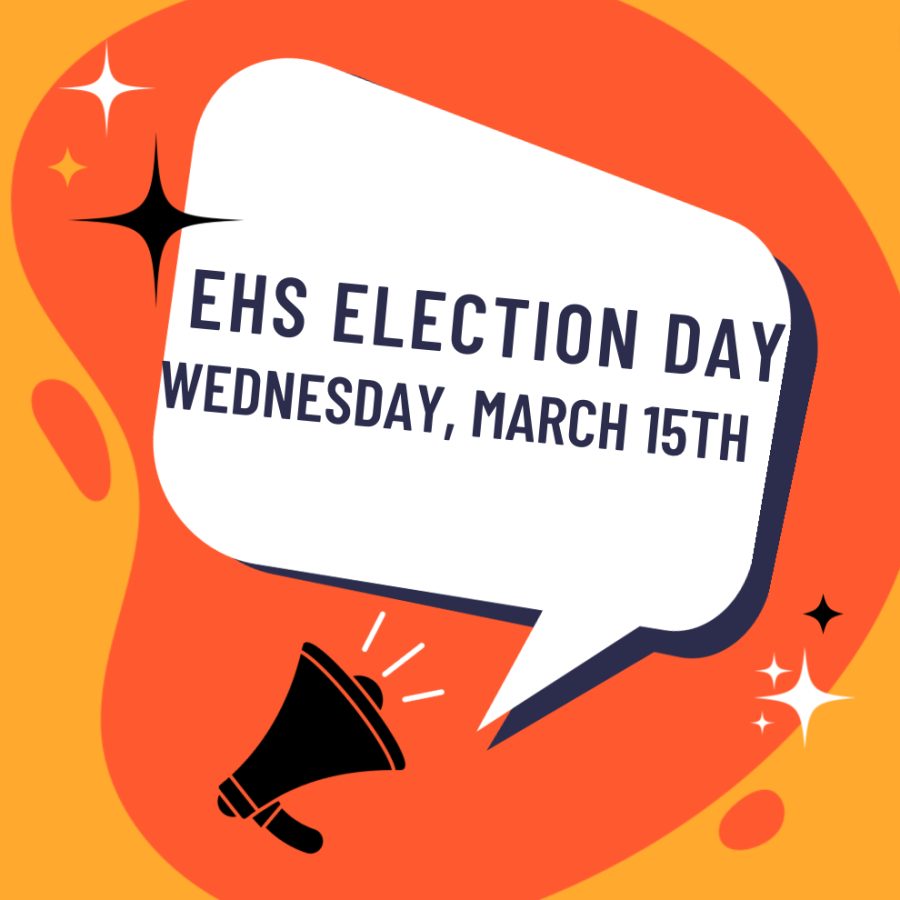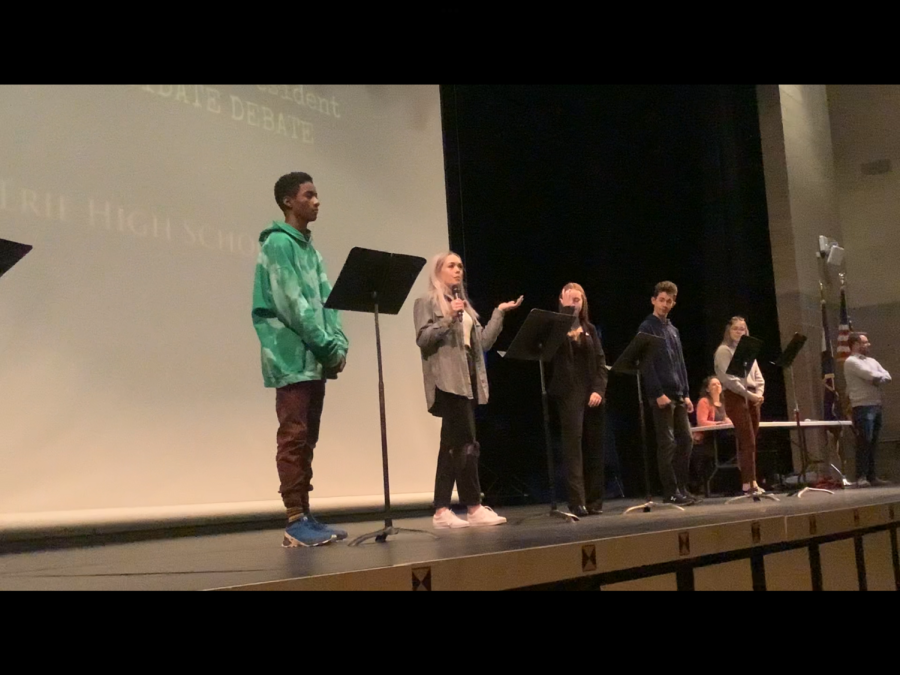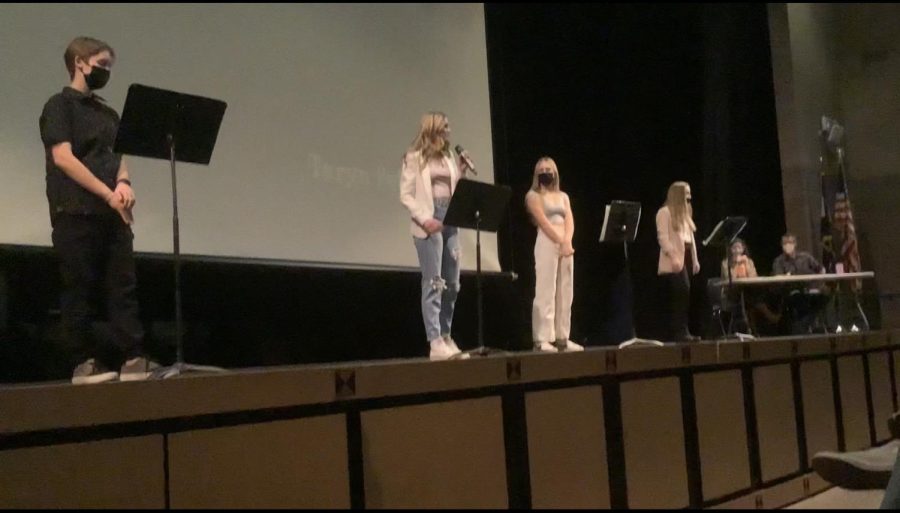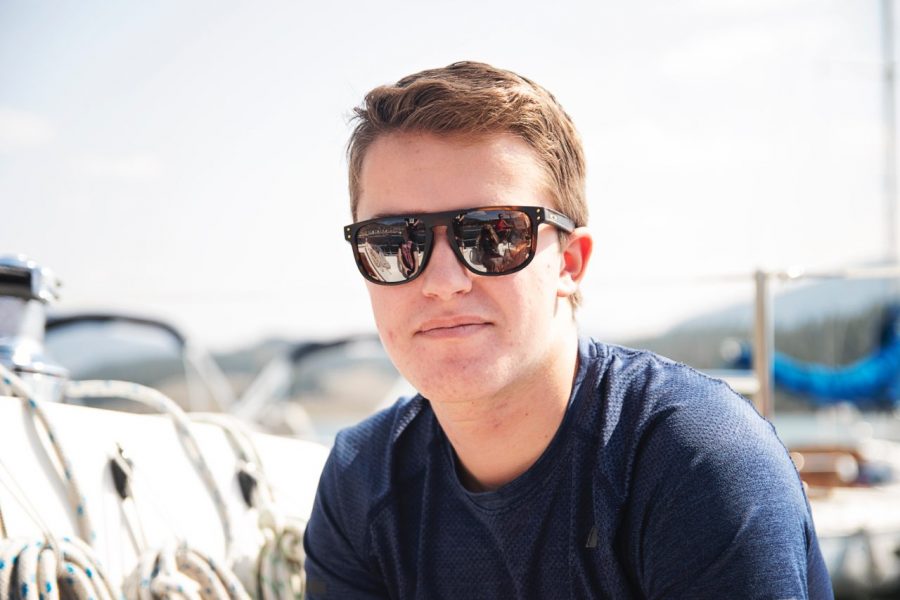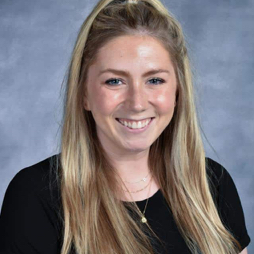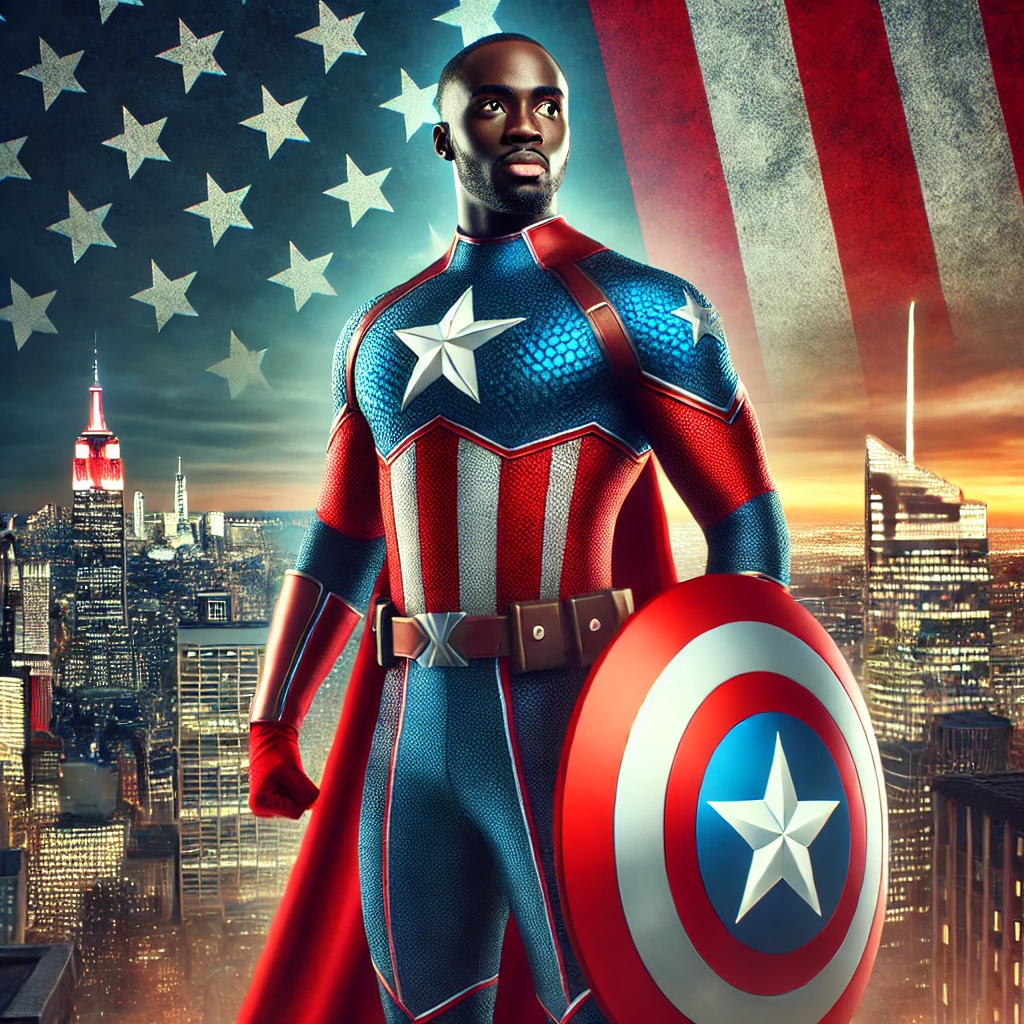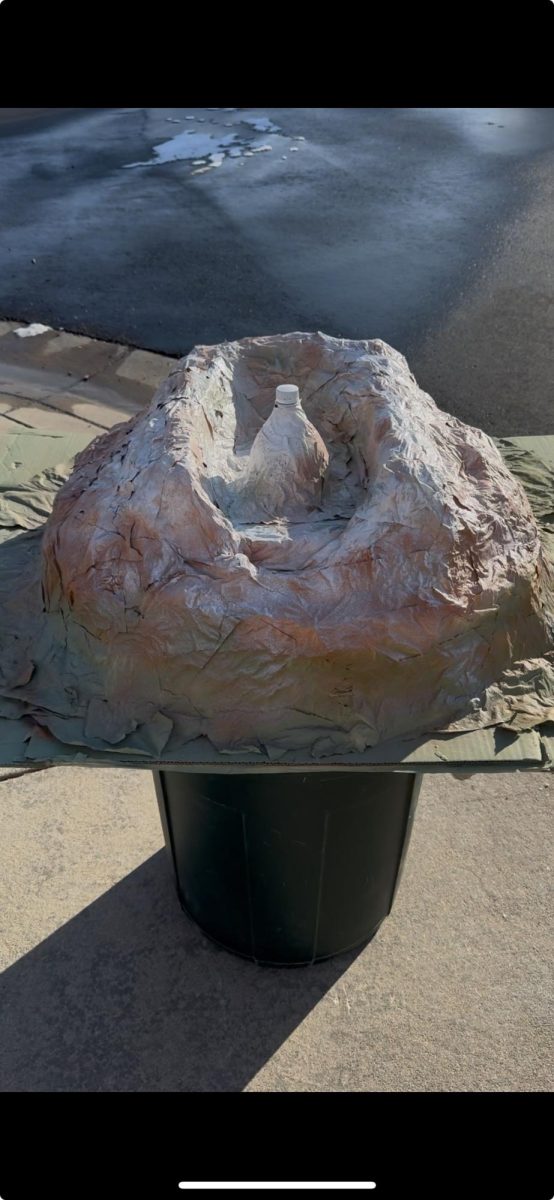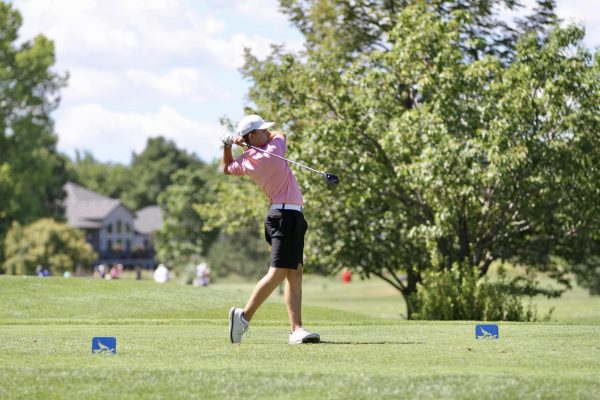At Erie High School, two senior editors are leading the charge behind the scenes of the journalism class. Ellie Keniston and Kenna Miller have spent three years shaping stories and mentoring writers, turning the Erie Tiger Network into a strong student voice built on truth, empathy, and leadership.
Keniston once set her sights on political journalism, imagining herself at the center of debate and policy. When she joined Erie Tiger Network as a sophomore, she found something even more compelling: the chance to tell the stories of her own community. As she moved through her three years in the program, taking on more responsibility each semester, she discovered that editing was as much about leadership and mentorship as it was about crafting the perfect article.
“I really wanted to be a political journalist,” she said, “but climbing the ladder to become an editor here happened almost naturally.” Watching Keniston work is like observing an orchestra conductor: calm, precise, and entirely in control of dozens of moving parts. She’s the one reminding classmates of deadlines, checking in on scripts, and reviewing drafts to make sure every sentence flows and every interview quote lands with impact. She balances expectations with support, knowing that each student’s story—whether it’s a profile of the theater tech crew or a deep dive into school policies—matters.
But Keniston’s purpose isn’t just producing clean, compelling content. She sees journalism as a tool to elevate voices often overlooked. “It informs the student body and allows them to know what’s going on,” she said, “but it also sheds light on people not commonly in the spotlight.” Thanks to her guidance, ETN’s written coverage has expanded to include features on quiet seniors, behind-the-scenes staff members, and clubs with niche audiences. She believes journalism shouldn’t just reflect the loudest voices—it should reach into every corner of the school.
Kenna Miller, her fellow editor, shares that same philosophy of inclusivity and purpose, though her journey took a different shape. Now in her third year with the program, Miller started by writing simple stories and quickly found herself drawn to the challenge of editing—where deadlines are tighter, responsibilities heavier, and the stakes higher. Over time, she developed not just the technical skills, but the confidence to lead and mentor others.
“Time management is a really big thing,” Miller explained. “You have to get your story in before others so you have time to edit theirs.” That meant staying ahead on her own assignments, balancing writing and revision with careful coordination of others’ work. On any given week, she might be polishing someone’s interview feature, helping another student with sourcing, and still writing her own piece on top of it all. The fast pace forced her to become hyper-organized and adaptable.
But the greatest growth, she said, came from learning how to work with people. “I really learned how to evoke different emotion out of people and how to properly talk to adults in a professional setting while interviewing,” Miller said. Whether she was interviewing a teacher about curriculum changes or a student about a personal achievement, she learned how to ask questions that encouraged honesty—and how to write stories that respected their voices.
The partnership between Keniston and Miller is rooted in trust, shared vision, and a mutual respect for storytelling. Keniston brings strategic oversight, big-picture thinking, and the ability to manage multiple contributors. Miller, on the other hand, brings clarity, empathy, and a talent for spotting the emotional heart of a story. Together, they run the class like a real newsroom: assigning pieces, reviewing drafts, offering feedback, and making final calls on what gets published.
Their editing table isn’t just where stories go to get cleaned up—it’s where voices are refined, angles are sharpened, and good work becomes great. They’ve developed a process for reviewing each piece that includes peer feedback, multiple rounds of revision, and a final proofread to catch every detail. They work hard to maintain a professional standard while creating an environment where everyone feels welcome to grow.
That growth is personal, too. Both editors have seen shy underclassmen blossom into confident writers under their guidance. “It’s not just about the articles,” Keniston said. “It’s about helping students find their voice.” She often gives first-year students advice on interview techniques or story structure, while Miller spends time helping writers explore new beats—from student life to community outreach.
The impact of their work reaches well beyond the classroom. Stories developed under their leadership have covered everything from student protests to teacher retirements, and from club fundraisers to local policy issues. Their work shows that student journalism, when taken seriously, can inform, inspire, and even influence.
Both editors believe in using the platform of the class to highlight a wide range of experiences, not just the most obvious news. That’s led to more feature writing, more personal storytelling, and more creative angles. Miller has explored all avenues of storytelling, ranging from political updates to highlighting a classmate who started their own business. These are the kinds of stories Keniston and Miller love to encourage—ones that reveal the character of a place through the people who live and work there.
Their leadership also reflects in how they balance editorial control with collaboration. While they make final decisions on what goes into the publication, they always seek input from their classmates. Staff meetings include open discussions where everyone can pitch ideas and voice concerns. If a writer’s story angle doesn’t quite work, Keniston and Miller work with them to find a new approach rather than shutting it down.
It hasn’t always been easy. Both editors have had to make difficult calls—like cutting stories that didn’t meet standards or navigating missed deadlines that affected group timelines. But they handle those situations with maturity and fairness, focusing on solutions instead of blame. “I’ve learned how to confront problems with empathy,” Keniston said. “We’re all learning, and mistakes are part of that.”
They’re also aware of the legacy they’re leaving. With graduation on the horizon, both editors are preparing to pass the torch to the next generation of student journalists. They’ve helped create systems—like editorial calendars, peer editing checklists, and feedback forms—that will continue long after they leave. More importantly, they’ve helped shape a culture of respect, curiosity, and professionalism.
As they look back on their time in the class, both editors reflect on how much they’ve changed. Keniston has grown from a quiet freshman into a confident leader with an eye for impact. Miller has gone from a curious writer to a thoughtful editor who knows how to bring out the best in others. They’ve learned not only how to write and edit, but how to manage a team, handle pressure, and tell stories that matter.
In the end, Keniston and Miller’s legacy isn’t just about the articles they’ve published or the feedback they’ve given. It’s about the environment they built—a newsroom that values every voice, encourages growth, and holds itself to a high standard. It’s about the students they mentored, the stories they championed, and the belief they modeled: that good journalism is built on trust, empathy, and truth.
Their names might fade from the bylines in the coming years, but the tone they set and the culture they cultivated will remain—etched into every article that finds its way into the hands of the Erie High community.




